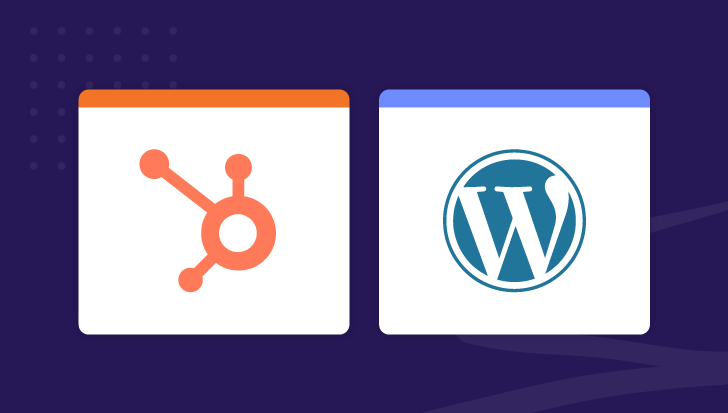



An effective website for healthcare doesn’t just need to look good. Whether marketing a health tech solution or promoting a health-related service, it must be a sales tool that helps you attract new prospects, build their trust, and convert them into leads.
However, mastering all the moving pieces needed to accomplish this can be daunting. What pages does your website need to be successful? How should you design your pages to foster a seamless experience for your site visitors? And how do you maximize your site content to attract high-intent buyers?
To understand the best place to start answering these questions, we asked Erica Pierce, Creative Director and Spot On Partner, to share what she focuses on at the planning stage to set a solid foundation for building the best healthcare SaaS websites.
"You must know who your audience is and what industry they're in. Then, consider what pages should be on your site and what goals you want each to accomplish," says Pierce. "Consider how you want people to move through the site and how you position your solution strategically by connecting with their pain points and challenges." Building off of this launchpad, let’s explore a few essential considerations you’ll need to think about when developing your online strategy and how the best healthcare marketing teams can help.
Let's take a closer look at what you should consider when initiating your website design effort:
An effective website for healthcare must deliver relevant information and an outstanding user experience (UX) to draw in high-quality leads, build credibility for your brand, and guide visitors through the sales funnel.
Besides creating user personas based on data you gather about your target audiences, leverage search engine optimization (SEO) research to understand the voice of your customers. For example, how do they talk about their challenges at different stages of their buying journeys? Insights from your SEO research can help you uncover granular search trends and improve the customer experience with your online brand.
These same insights can also inform your content marketing approach — a critical component of any health tech marketing strategy — to deliver reader-centric content to the right people at the right time.
B2B buyers seek the latest information, insights, and trends about their industry. Your website content must reflect an in-depth understanding of the healthcare sector to build credibility and stay relevant to your target audiences.
Conduct market research and access industry reports to glean contemporary healthcare insights. Attend conferences and trade shows to stay on top of overall trends and have meaningful conversations with thought leaders. Also, see what industry professionals are talking about on online communities and forums to ensure your content strategy aligns with up-to-date pain points your audiences care about the most.
Don't overlook the importance of competitor analysis to understand the strengths and weaknesses of other vendors in your market. Use these insights to position your brand strategically to fill gaps and capture prospects' attention.
Before creating content and designing your website, set objectives(s) for each page. Each part of your site should have a specific purpose and contribute to the overall success of your online strategy.
For example, your homepage should provide an overview of your solution and its key benefits. It should also encourage users to explore your site and sign up for a demo or trial, depending on which stage they’re in of the buyer’s journey. Meanwhile, product detail pages should offer in-depth information about the features and benefits of your solution, directing visitors further down the buyer's journey.
The blog and resource section(s) should feature content that positions your brand as an industry thought leader and trusted solution provider — as well as encourage your reader base to get lost in your insights. Also, you should have an easily accessible "request a demo" page to invite visitors to learn more about your solution, draw in buyers, and collect information for follow-ups.
How do you want visitors to move through your website — from when they first learn about your brand to becoming customers? To deliver a seamless and high-converting experience, you must map out the user path and ensure each step is clear.
For instance, keep the number of links and calls-to-action (CTAs) on each page limited to just a few different, highly relevant options. This will keep visitors on the path to conversion versus sending them down a rabbit hole of never-ending twists and turns.
The path users take also depends on where they are in their buyer’s journey. For example, someone who is in the awareness stage and is just beginning to define their problem will likely take different actions and explore different content than someone who has been to your website multiple times and is ready to make a purchasing decision. Make sure you have a clear plan for both.
"Consider your audience's point of view, their pain points, and desired outcomes, before talking about how great your products are," says Pierce. The website should connect your solution to the audience's concerns and priorities.
As such, your content should be benefit-forward instead of feature-forward. Most decision-makers care more about what a solution can do for them than how it actually works. Although it's essential to include technical information about the software's functionalities, it's typically best not to lead with it.
You should also create an empathy map to help teams develop deeper insights into their target audiences. It could help establish a shared understanding of users' needs, emotions, and behaviors by noting what your prospects say, think, do, and feel about the challenges your solution solves for them.
Building a website for healthcare involves juggling a lot of different parts — and setting the foundation with the five principles above is just the beginning.
For example, your site's visual design should work with its copy to drive conversion. Formatting and implementing strategies for on-page and off-page SEO can improve visibility and drive organic search traffic to your site. Also, supporting the initial effort with a robust content marketing strategy is going to help ensure ongoing success on search engine ranking pages while improving audience engagement.
An experienced healthcare marketing services team can help you turn a solid understanding of your target audiences into content and design for a high-converting website. The best healthcare marketing firms can also scaffold it for SEO and monitor analytics to stay on top of the latest updates and best practices.
Spot On helps healthcare SaaS companies develop and implement their website strategies. Schedule a meeting to see how we can help you design a fresh, on-brand website that clarifies your message and gives customers a clear path to convert.


Spot On co-founder and partner Susie Kelley is dedicated to leveraging technology to advance innovative solutions in highly regulated industries. Driven by the opportunity to elevate brands, she co-founded Spot On in 2012 after having spent 15 years honing her marketing skills in an agency. Susie leads business development with a personal touch, focusing on building lasting relationships with clients to meet — and exceed — their goals for business growth.
Get the latest and greatest posts sent straight to your inbox.


